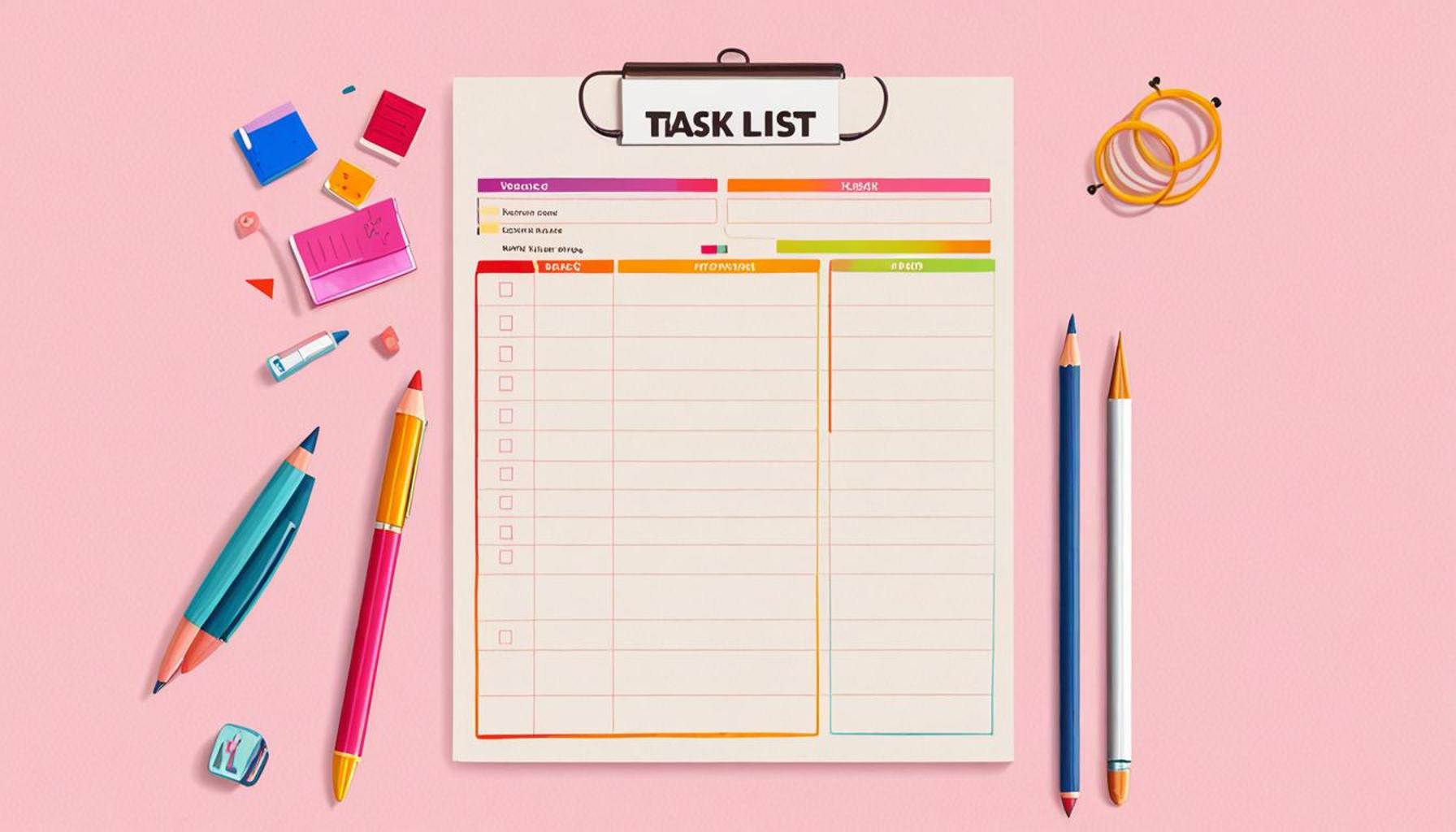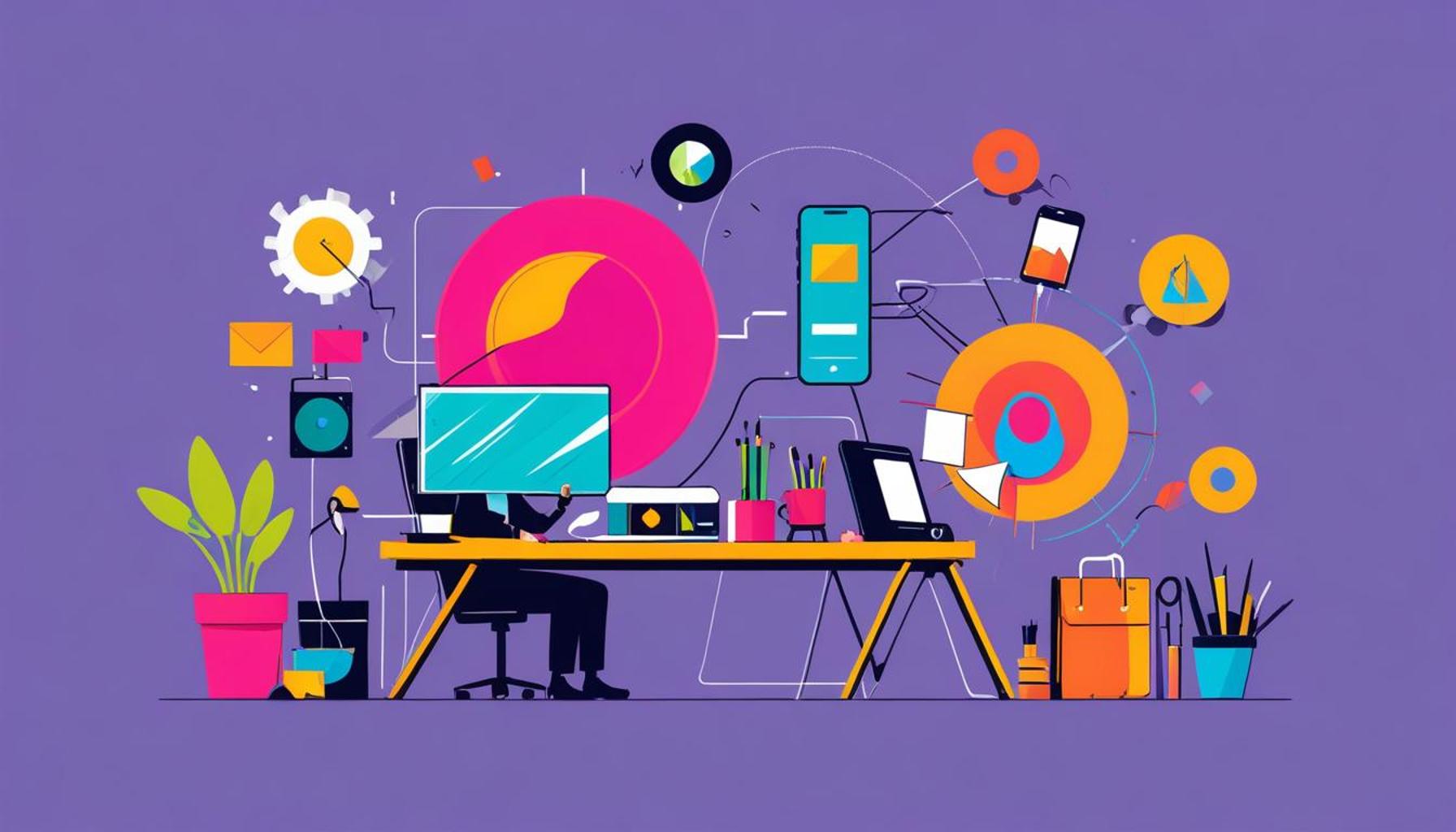The Power of Digital Detox: Strategies to Reduce Information Overload

Understanding the Digital Overload
The digital landscape is increasingly becoming a maze of distractions and information overload. With notifications pinging on various devices and social media feeds continually demanding attention, many individuals find it challenging to navigate through their daily tasks. This influx of information can leave one feeling unproductive and overwhelmed. In fact, Americans spend nearly 7 hours a day on digital devices, according to recent studies, revealing just how deeply embedded this digital life has become.
Moreover, research indicates that excessive screen time contributes to heightened anxiety and depression. The relationship between mental health and technology use is becoming clearer, with a growing body of literature linking screen overexposure to adverse psychological effects. For example, a survey by the American Psychological Association found that nearly 60% of adults report feeling stressed by the sheer amount of information they encounter daily. This stress can impede one’s ability to focus and maintain a healthy work-life balance.
Benefits of a Digital Detox
Amidst this overwhelming digital presence, taking a step back by committing to a digital detox can be incredibly beneficial. A detox can manifest in various forms, from setting aside specific screen-free hours to completely unplugging for days or weeks.
Engaging in a detox can lead to several positive changes, such as:

- Improved mental clarity and concentration: Reducing screen time allows the brain to recharge, enhancing one’s ability to think critically and concentrate on tasks.
- Enhanced relationships: By prioritizing face-to-face interactions over digital communications, individuals can foster deeper connections and improve their social skills.
- Increased productivity: Cutting down on digital distractions aids in focusing on tasks, thus boosting overall productivity and creativity.
Implementing a Digital Detox
It’s important to note that a digital detox does not have to be a drastic, all-or-nothing affair. Begin with small, strategic changes that gradually help reduce information overload. For instance, consider the following tactics:
- Schedule designated “no tech” hours during the day to reconnect with hobbies, nature, or loved ones.
- Use apps that track screen time, providing insight into usage patterns, helping to set limits on less productive activities.
- Engage in mindfulness practices, such as meditation or journaling, to help process thoughts and emotions that might be contributing to feelings of being overwhelmed.
By implementing these strategies, individuals can reclaim control over their digital surroundings and nurture more fulfilling lives. As the digital age progresses, understanding the need for and value of a digital detox becomes increasingly essential in maintaining one’s mental well-being and productivity.
DIVE DEEPER: Click here for tips on maximizing your bedroom space
The Impact of Information Overload on Daily Life
The incessant flow of information in today’s digital world can be overwhelming, leading to a state of constant distraction. Everyday activities are often punctuated by the barrage of emails, social media alerts, and news updates. For many, this digital barrage leads to “information fatigue syndrome,” a phenomenon characterized by difficulty concentrating and decision paralysis due to the sheer volume of information encountered. Statistics reveal that more than 80% of Americans feel overwhelmed by the amount of news and information they consume each day. This reality emphasizes the urgent need for effective strategies to manage digital consumption.
The pervasive nature of digital content can drastically alter personal and professional dynamics. Many find it challenging to maintain their attention on tasks that require deep focus, often falling into a cycle of multitasking. Studies suggest that multitasking can reduce productivity by as much as 40%. With an increase in distractions, tasks take longer to complete, and the quality of work may diminish. Therefore, reclaiming one’s mental space becomes a crucial step in boosting efficiency and productivity.
Defining Digital Detox
A digital detox is more than just a buzzword; it represents a conscious effort to disconnect from technology for a specific period, allowing individuals to reconnect with themselves and their immediate surroundings. This can range from a temporary pause—designating “tech-free zones” in the home—to extended periods away from devices, like weekend retreats or vacations without screens. Research has shown that even short breaks from technology can greatly enhance cognitive function and emotional health.
Practical Strategies for a Successful Digital Detox
Implementing a successful digital detox does not require a complete withdrawal from technology. Instead, it encourages creating a balanced relationship with digital devices. Here are some practical strategies that can be adopted:
- Establish ‘Digital Downtime’: Designate specific times of day for digital detox, encouraging a break from screens to unwind and focus on self-care.
- Limit Social Media Usage: Utilize various tools to set daily limits on social media platforms, reducing potential distractions and fostering intentional use of these spaces.
- Engage in Offline Activities: Reconnect with hobbies such as reading, painting, or exercising, which promote mental well-being without involving screens.
By adopting these strategies, individuals will not only mitigate information overload but also improve their overall quality of life. As the world embraces the digital age, understanding the benefits of stepping back from technology becomes paramount in forging a healthier, more balanced lifestyle.
| Category | Description |
|---|---|
| Mindfulness Practices | Mindfulness practices, such as meditation and breathing exercises, enhance your ability to focus and regain control over your mental space. |
| Time Management | Strategic time management methods can help allocate specific times for checking emails or social media, reducing the constant pull of notifications. |
| Nature Breaks | Spending time in nature is scientifically proven to decrease stress levels and improve overall well-being. |
| Digital Boundaries | Establishing digital boundaries allows you to disconnect from devices and reconnect with your physical environment. |
Digital detox strategies focus on maintaining a healthier relationship with technology, which can mitigate the effects of information overload. Incorporating mindfulness practices not only enriches the mind but also combats the chaos created by constant notifications. By managing one’s time effectively, one can create a rhythm that eases the inundation of digital input. The mere act of spending time in nature has profound benefits, leading to decreased stress levels, making it a pivotal part of one’s detoxification strategy. Moreover, establishing clear digital boundaries allows a person to reclaim their focus and foster deeper connections with loved ones and themselves. As we explore these strategies further, it becomes clear that a digital detox is not merely a trend; it is a necessary response to the challenges of our modern lives.
DISCOVER MORE: Click here to learn effective decluttering techniques
Reaping the Benefits of a Digital Detox
Engaging in a digital detox can lead to profound transformations in both mental and emotional well-being. The transition away from screens provides an opportunity for individuals to shift focus back to the present moment, enhancing mindfulness—a practice increasingly recognized for its benefits. According to a 2022 study published in the journal “Psychological Science”, participants who engaged in mindfulness activities for just a brief period reported a marked decrease in anxiety levels and an increase in their overall happiness. Without the constant bombardment of notifications, many individuals find they are more capable of engaging meaningfully with their environment and the people around them.
Furthermore, unplugging from digital distractions can significantly improve sleep quality. A survey by the National Sleep Foundation highlights that nearly 90% of Americans use electronic devices within an hour of bedtime. The blue light emitted by screens is known to interfere with melatonin production, which can lead to disturbed sleep patterns. A digital detox, particularly during the evening, allows the mind to unwind and prepares the body for rest, often resulting in feeling more refreshed upon waking.
Incorporating Mindfulness Techniques
Integrating mindfulness techniques into digital detox routines can enhance the benefits even further. _Mindful breathing_ exercises, for example, can be practiced during designated digital downtime. This requires only a few minutes of intentional focus on one’s breath, fostering a deeper connection to the body and thoughts, which can help ground an individual when the urge to check devices arises. According to research from the American Psychological Association, individuals who incorporate mindfulness practices routinely experience reduced stress and improved concentration levels.
Creating a Digital Detox Plan
To maximize the impact of a digital detox, creating a well-structured plan can prove vital. Here are key elements that can be included in a personalized strategy:
- Set Clear Goals: Identify specific outcomes to achieve from the detox, whether it’s reducing daily screen time, engaging more with family, or simply finding peace of mind.
- Communicate Boundaries: Inform friends, family, and colleagues about your detox plans, allowing them to understand your unavailability during certain times.
- Track Progress: Use journals or apps designed for tracking habits; documenting feelings before and after the detox can reveal personal insights about behavior patterns.
Being proactive in creating opportunities for digital disconnection can not only foster healthy boundaries but can also support the redefinition of one’s relationship with technology. For many, implementing such a detox plan translates into less time scrolling and more time spent engaging in activities that promote personal fulfillment and joy.
Community and Support Networks
Finally, enlisting support can amplify the positive effects of a digital detox. Engaging in group activities, such as enrolling in a fitness class or participating in book clubs, provides opportunities for connection that do not require digital devices. According to data from the Pew Research Center, social connections have a direct correlation with happiness; individuals who foster deeper relationships often report feeling more fulfilled. Communities embracing digital detoxes or tech-free events can create a supportive environment that encourages curiosity and self-exploration away from screens.
By actively exploring diverse strategies and nurturing personal connections, the power of digital detox becomes apparent. This shift not only combats information overload but invigorates lives, reclaiming focus and reintroducing joy in daily experiences.
DISCOVER MORE: Click here to learn about the impact of digital minimalism on your mental health</p
Conclusion: Embracing the Digital Detox
In an age where information overload is the norm, the power of a digital detox cannot be overstated. By intentionally stepping back from our screens, we not only reclaim our time but also rediscover a sense of balance and well-being. Engaging in structured digital detox methods—such as setting clear goals, establishing boundaries, and practicing mindfulness—can lead to significant improvements in emotional health, enhanced sleep, and deeper interpersonal connections. The statistics speaking to the benefits of mindfulness and community involvement compel us to consider how meaningful our lives can be when we step away from constant digital engagement.
Furthermore, creating a personalized digital detox plan is an invaluable investment in one’s mental clarity and emotional strength. Through tracking progress and reflecting on experiences, individuals can not only measure their success but also identify patterns that contribute to ongoing information overload. This self-awareness fosters a more intentional and fulfilling relationship with technology, allowing for mindful consumption instead of mindless scrolling.
As we collectively navigate our increasingly digital world, prioritizing a digital detox offers a lifeline to those feeling overwhelmed. By seeking support from like-minded communities, we can enhance our detox experiences and share insights that contribute to healthier lifestyles. Ultimately, the journey to reduce information overload is not just a personal endeavor; it’s a collective movement towards embracing a more present, engaged, and joy-filled life.



